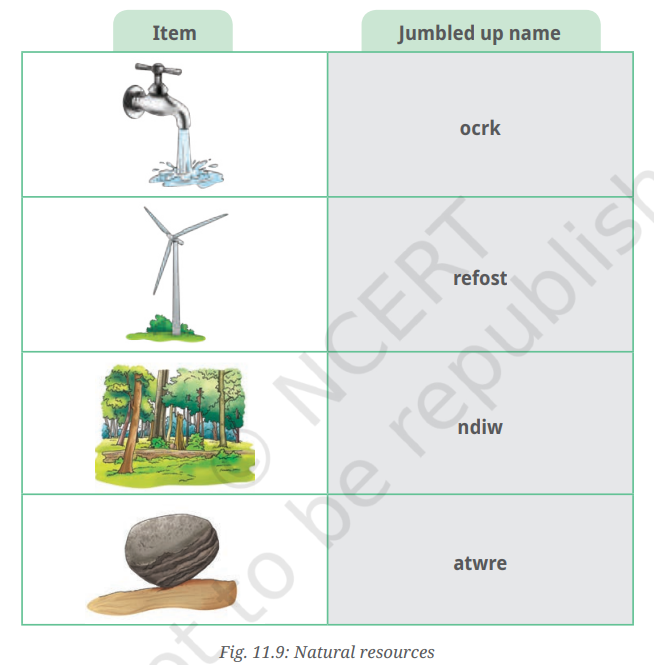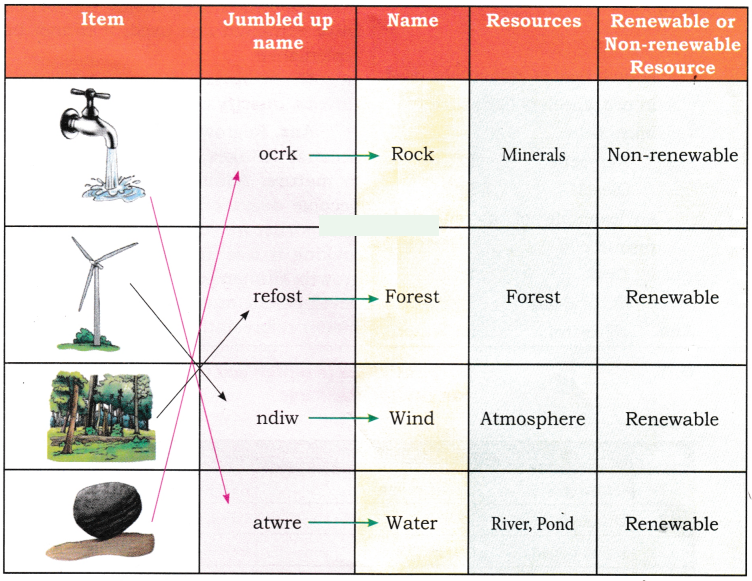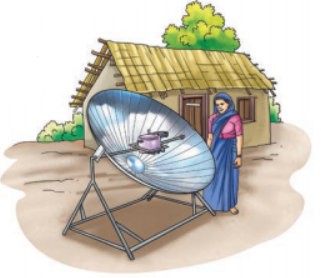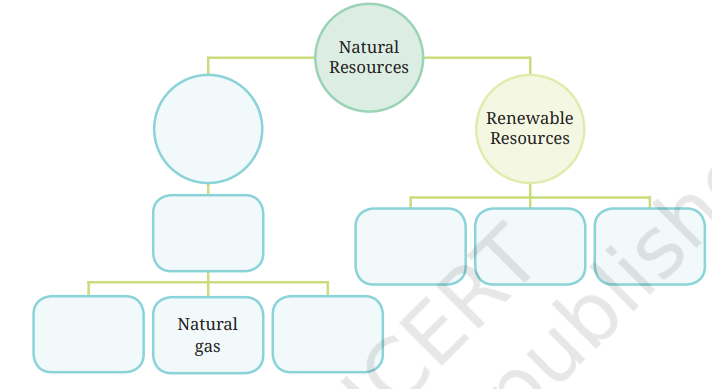Questions Ans For All Chapters – Science Curiosity Class 6
Nature’s Treasures
Question 1. Figure shows items related to natural resources. Match them with their jumbled up names. Make another table and write the names of these resources. Classify these resources as renewable or non-renewable.
Answer:
Question 2. State whether the following statements are True [T] or False [F]. If False, correct them.
(i) Nature has all the resources to meet human needs.
Answer: True
(ii) Machines are a resource found in nature.
Answer: False
Correct Statement: Machines are human-made resources, not natural ones.
(iii) Natural gas is a non-renewable resource.
Answer: True
(iv) Air is a renewable resource.
Answer: True
Question 3. Fill in the blanks using the most appropriate option:
(i) A fuel that is commonly used in two wheelers like scooters or bikes is ______________
(a) Kerosene
(b) Petrol
(c) Diesel
(d) LPG
Answer: (b) Petrol
(ii) An example of a renewable resource is ______________
(a) Coal
(b) Water
(c) Natural gas
(d) Petrol
Answer: (b) Water
Question 4. Classify the following as renewable or non-renewable resources— coal, natural gas, forests and minerals.
Answer:
Coal: Non-renewable
Natural gas: Non-renewable
Forests: Renewable
Minerals: Non-renewable
Question 5. Why do we say that petroleum is a non-renewable resource?
Answer: Petroleum is considered non-renewable because it takes millions of years to form from the remains of ancient organisms, and once it is extracted and used, it cannot be replenished within a human lifetime.
Question 6. It is difficult to regrow forests. Justify this statement.
Answer: Forests take a long time to regenerate because trees grow slowly, and the complex ecosystems they support, including soil, animals, and plants, are difficult to restore once disturbed. Large-scale deforestation reduces biodiversity and affects soil quality.
Question 7. Make a list of five daily activities in which you use natural resources. Suggest ways by which you can reduce their use.
Answer:
| Daily Activity | Natural Resource Used | Ways to Reduce use |
| 1. Cooking | Natural gas | Use solar cookers |
| 2. Drinking water | Water | Use a water-efficient faucet |
| 3. Using paper | Trees (forests) | Use digital documents |
| 4. Using electricity | Coal, natural gas | Use energy-efficient appliances |
| 5. Driving a car | Petroleum | Use public transport or cycle |
Question 8. List four activities that are possible due to the presence of air.
Answer:
Four activities that are possible due to presence of air :-
- Breathing (respiration)
- Flying kites or paper planes
- Wind energy generation
- Pollination in plants through wind
Question 9. How can you contribute towards enhancing the green cover of your locality? Make a list of actions to be taken.
Answer: List of actions to be taken
i) Participate in tree-planting drives.
ii) Encourage community members to plant more trees.
iii) Protect existing trees from being cut down.
iv) Use bio-friendly and sustainable gardening practices.
v) Create awareness about the importance of green cover.
Question 10. In the given illustration, we see that food is being cooked.
Answer the following questions:
(i) What type of energy is being used for cooking?
(ii) Name one benefit and one drawback of using this type of energy for cooking.
Answer:
(i) Solar Energy
(ii) Benefit: Solar energy is a renewable and clean source of energy. Hence it is environment friendly.
Drawback: Dependence on Weather: Solar energy cannot be used during cloudy days or at night, which limits its reliability and convenience.
Question 11. Cutting down trees on a large scale impacts the quality of the soil. Why do you think it is so?
Answer:
Without trees, the soil can be washed away by rain, leading to the loss of fertile topsoil. Furthermore, fallen leaves from trees decompose and add organic matter to the soil, enhancing its fertility and structure. Cutting down trees impacts the quality of soil because tree roots help to bind the soil together, preventing erosion.
Question 12. Explain two ways in which human activities pollute the air. Propose one action which can help in reducing air pollution.
Answer:
Ways human activities pollute air:
- Burning fossil fuels in vehicles and factories releases harmful gases.
- Deforestation leads to the loss of plants that clean the air.
Action: Promote and use public transport or electric vehicles to reduce vehicle emissions.
Question 13. A family uses solar panels to generate electricity, a gas stove to cook food, and a windmill for pumping water. What would happen if there were no sunlight for a week?
Answer:
Without sunlight, the solar panels would not generate electricity. This would force the family to rely on backup sources like the grid or alternative energy forms to meet their power needs.
Question 14. Fill up the blanks using the following terms— [fossil fuels, forest, air, petroleum, coal, water and non-renewable resource)
Answer:
Question 15. Is the increasing demand for trees to meet the requirements of industries and housing justified? Discuss and prepare a brief report.
Answer:
No, it is not justified to cut down trees excessively. Forests are crucial for maintaining biodiversity, providing oxygen, and regulating the climate. Unchecked deforestation leads to loss of habitats, increased carbon dioxide levels, and soil erosion. Sustainable practices such as afforestation, controlled logging, and using alternative materials should be promoted.
Question 16. Propose a plan to use less water in your school. What steps would you take to make this plan happen and how would it help the environment?
Answer:
Plan to Use Less Water
- Use grey water for gardening purposes.
- Implement a rainwater harvesting system.
- Install water-efficient faucets and toilets.
Steps to Implement the Plan
- Monitor water usage regularly and set reduction targets.
- Encourage student-led initiatives for water conservation.
Benefits: This will conserve water resources, reduce wastage, and lower the school’s water bills, while promoting environmental responsibility among students






Student like this link very much for their studies and I belive this link is very good because I also learn with this.
A very good link for student to learn and write ✍️
Very good app it help me to do homework😊😊thanks
Super
Thank you 🙏
This so good website for finding question answers. Thanks evidhyarthi!!!
Thnx !!
Okok